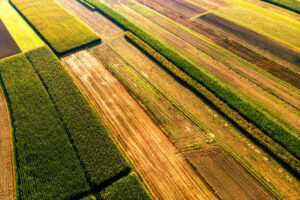

Several Russian rivers enter the Arctic Ocean particularly in the Laptev Sea north of Siberia. One of the main rivers flowing into the Laptev Sea is the Lena, which in terms of its drainage basin and length is one of the ten largest rivers in the world. The river water carries organic carbon from the tundra, and research from the University of Gothenburg shows that this adds a considerable amount of carbon dioxide to the atmosphere when it is degraded in the coastal waters.
Increased temperatures
The increase in temperature in the Arctic, which has already made an impact in the form of reduced sea-ice cover during the summer, may also cause the permafrost to melt.
“Large amounts of organic carbon are currently stored within the permafrost and if this is released and gets carried by the rivers out into the coastal waters, then it will result in an increased release of carbon dioxide to the atmosphere,” says Sofia Hjalmarsson, native of Falkenberg and postgraduate student at the Department of Chemistry.
Study of two areas
In her thesis, Sofia Hjalmarsson has studied the carbon system in two different geographical areas: partly in the Baltic Sea, the Kattegat and the Skagerrak, and partly in the coastal waters north of Siberia (the Laptev Sea, the East Siberian Sea and the Chukchi Sea). The two areas have in common the fact that they receive large volumes of river water containing organic carbon and nutrients, mainly nitrogen.
The thesis Carbon Dynamics in Northern Marginal Seas was successfully defended on 18 December. http://hdl.handle.net/2077/21245
Contact:
Sofia Hjalmarsson, postgraduate student at the Department of Chemistry
+46 (0)706 479442
+46 (0)31 7722777
sofia@chem.gu.se
—
The information is based on the following papers:
I. Hjalmarsson, S., Wesslander, K., Anderson, L.G., Omstedt, A., Perttilä, M., Mintrop, L. (2008). Distribution, long-term development and mass balance calculation of total alkalinity in the Baltic Sea. Continental Shelf Research, vol. 28, 593-601.
II. Hjalmarsson, S., Anderson, L.G., She, J. (2009). The exchange of dissolved inorganic carbon between the Baltic Sea and the North Sea in 2006 based on measured data and water transport estimates from a 3D model. resubmitted after revision to Marine Chemistry
III. Hjalmarsson, S., Chierici, M., Anderson, L.G. (2009). Carbon dynamics in a productive coastal region – Skagerrak. submitted to Journal of Marine Systems
IV. Anderson, L.G., Jutterström, S., Hjalmarsson, S., Wåhlström, I., Semiletov, I. (2009). Out-gassing of CO2 from Siberian Shelf seas by terrestrial organic matter composition. Geophysical Research Letters, vol. 36, L20601.












